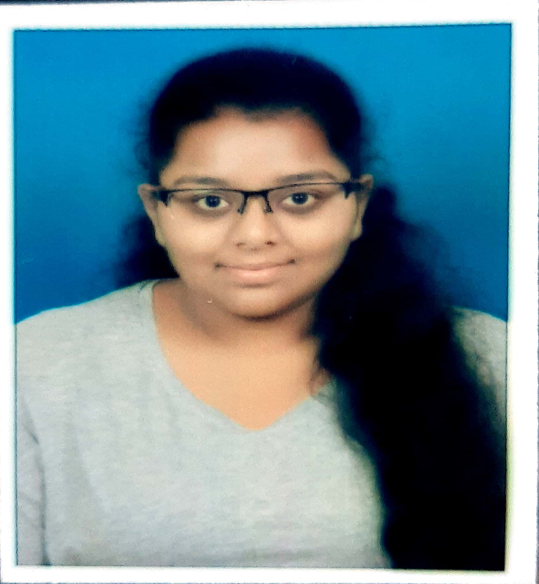STUDY IN USA
INDEX |
|---|
| Overview |
| Why Study in USA |
| University deadlines & Intakes |
| USA University Admission Process |
| Cost of Education & Funding Options |
| USA F1 Visa Process |
| Work Options |
Overview
The United States of America (USA) is called the Land of Opportunities. Studying in the United States doesn’t just give you tangible degrees and certificates. Your experience says something about who you are. This Popular destination consists of the contiguous states and Washington, D.C., are in central North America between Canada and Mexico. It is the 3rd largest country both by size and population. The official language is English and is spoken by 80% of the people. About 82% of American population lives in cities.
Despite the challenges Students looking for the best overseas education and planning to put their careers on the fast track, the USA still remains as one of the hottest destinations for Indian Students. This is because it has an immense range of specialties, high quality of education, great opportunities, which attracts students from different countries of the world. The factors that make the US, the number one educational hub for international students are:
Just like the Statue of Liberty has symbolized the freedom and the democracy of the United States, it also signifies that students who are passionate about their career are always welcome and grow in this County.
“The quality of a person’s life is in direct proportion to their commitment to excellence, regardless of their chosen field of endeavour. This saying holds true to those who want to succeed in this country. And one of the highest selling points of American education is perhaps its worldwide reputation of commitment to excellence.
Why USA
The United States of America (USA) hosts the most number of international students in the world. Quality education, unique curriculum, multicultural environment, and abundant opportunities are just some of the reasons why many students want to study in the US.
Here are top 4 reasons why studying in USA will benefit your future:
- Academic flexibility: The USA has about 4,500 universities; students can choose to study at one of 4,500 universities. 16 universities in the USA are ranked in the world’s top 20 universities.
- Research & training opportunities: The USA is the no.1 research and development Centre in the world. It has devoted the largest amount of human and financial resources to the research and development department. According to the Research and Development Statistics Report, the USA had spent 464,324 million dollars in R&D. USA spends 2.73% of its GDP on research and development projects opening millions of research-based career pathways for international students
- State-of-the-art learning technology: An international degree opens up a wide range of career prospects and a degree from a reputed university widens the scope even further. Due to the varied insight into different fields of study offered by universities of the USA, it broadens the scope of the career path that the student chooses and it is known that international companies look for candidates that offer them with a different take or perspective on their products
- Help & Support for international students: It also supports International Students as studying in the United States is a rewarding experience but navigating your way through day-to-day issues can be a challenge. Many international students find that the college and university international student office is a great resource when it comes to adapting to a culturally and academically different environment.
Universities Deadline & Intakes
US universities have 3 intakes for students.
- Fall Intake : August/September
- Spring Intake : January/February
- Summer Intake: April/May
The deadlines for each intake are usually a few months before the start date. It is highly recommended that you apply early to maximize your chances for admission. Some universities even offer rolling admissions, i.e. admissions are open through the year. The major intake for the US is the Fall intake which offers the highest degree of competition but also features the largest number of corporate internships.
Entry Requirements:
- The US generally requires 16 years of education (12+4).
- Academic Percentage : 58% and above with minimum backlogs
- Acceptable scores of Standardized Tests GRE : 300+, GMAT : 500+, TOEFL : 79, IELTS : 6.5 overall band
Other factors that are looked into are the extracurricular activities that the student has been involved in, the research that the student has done in his particular subject. His documents such as Resume, Letters of recommendation & Statement of Purpose are also very crucial and have to be drafted very effectively.
USA University Admission Process:
USA universities follow a traditional first come first serve basis while admitting students. Therefore students who apply early stand a stronger chance during admissions. Ideally students should start the admission process about 8 months in advance.
Firstly, Students need to fill an online application. Most universities have an admission fee which has to be paid online. The online confirmation along with physical copies of admission documents have to be sent to the university. The documentation for admission is fairly detailed and varies with university. It usually covers academic documents, financial documents recommendations, SOP etc., (for a detailed list, contact us).
And many universities also require online score reporting. It usually takes 3 months for the university to process applications. Some courses and specializations may take more time. The admission confirmation document is called I20 (or IAP66 in some cases) and this document is the basis for visa processing.
Below mentioned are the steps outlined for you:
- Step 1: Preparing & writing of authorized Tests like GRE, GMAT, TOEFL or IELTS
- Step 2: University Shortlisting based on your Profile, Academics Program interested & available deadlines
- Step 3: Online Application – Filling & submitting Online application form to the University / department of the college & Online application fee payment
- Step 4: Submitting necessary documents:
- Academics 10, 10+2 (Attested by School or college in sealed envelopes)
- Bachelors (All Transcripts)
- LOR (Letter of recommendation) – Minimum 3 copies
- SOP (Statement of Purpose)
- Resume
- GRE / GMAT / IELTS / TOEFL score reporting to Universities
- Step 5: Mailing and Tracking:
- Financial Statement
- Mailing- Courier
- Tracking of Application
- Step 6: Visa Guidance
- Filling DS Forms
- VISA Training Classes
- Mock VISA Interview
Checklist of Documents for receiving I20 / Admission Confirmation:
- Academics 10, 10+2. (Attested by school or college in sealed envelopes)
- Bachelors (all transcripts)
- Recommendation letter (minimum 3)
- TOEFL/GRE/GMAT – IELTS reporting when required
- Bank statement – In a bank letterhead for 20 to 25 lakhs
- SOP (min 500 words)
- Resume
- Passport
- Photographs
- Extracurricular certificates (if any)
- Experience letter (for gap more than 6 months)
COST OF EDUCATION
Tuition fee:
Tuition fee varies from one institution to another and this is depending upon the chosen program. Generally, in public/State Universities and private universities, tuition fee ranges $12000 to $40,000 per annum.
In Ivy League universities tuition fee ranges $48000 to $60000.
Methods to deal with the cost of studying in the USA for students include scholarships and education loans. Scholarships in the USA are offered to international students for the majority of courses. Education loans are also offered by banks and institutions for pursuing higher education.
Living Expenses
Estimated Living Cost: $8000 to $14000 (per year). An average of $700 to $1000 per month should be considered as a reasonable amount. This includes your accommodation (room and board),travel, food, and some university mandated books.
Health Insurance Cost: This is mandatory for international students. It would range from $1750 to $2000 per year.
Miscellaneous Charges: $2000 per year
| Graduate | Undergraduate | |
| Tuition Fee | $12000 – $40000 | $20000 – $80000 |
| Living Expenses | $8000 – $14000 | $8000 – $14000 |
| Health Insurance | $1750 – $2000 | $1750 – $2000 |
| Misc. Expenses | $2000 | $2000 |
FUNDING OPTIONS:
The USA is the only country which offers up to 100% scholarships on tuition to deserving students. This may be based on the student’s overall profile, both academic or extracurricular profile and the financial need of the student.Few states may offer In- State Tuition waivers which work out to be 50% to 80% on the overall tuition fee.
Different Types of Financial Aid
- Tuition Fee Waiver in form of Assistantships
- Research Assistantships
- Teaching Assistantships
- Graduate Assistantships
USA Visa Process:
Visa process can often be stressful. However, because the USA is one of the most sought-after destinations, the visa procedure is considerably simpler. There are three types of student visas regardless the most common one is F-1 student visa. Other student visa types are J-1 Exchange visa visitor and M-1 Vocational/Non-Academic student visa.
F-1 student visa
- Most of the students apply for an F-1 visa. Individuals pursuing Under-graduate, Post-graduate programs on full-time or part-time basis apply for F-1 visas
- On part-time basis during semesters, students are allowed to work 20 hours per week
F-1 visa process : How To Apply
Complete the Online Visa Application
Online Nonimmigrant Visa Application
You must:
- complete the online visa application DS-160
- Pay application fee for Form I-901, through USA immigration and customs enforcement
- and print the application form confirmation page to bring to your interview.
- Photo –You will upload your photo while completing the online Form DS-160.
- Collect Form I-20 from college, it is issued by the colleges in USA
- Print the application SEVIS fee receipt
- Apply for online student visa application form DS-160
- Print out the application confirmation page
- Pay visa application fee
- Print out the application fee receipt
- Schedule an appointment for USA student visa interview (You will find your DS-160 application and fee receipt at the end of this process)
Documents to carry for F-1 student visa process:
- Passport
- Passport size photographs
- Non-immigrant Visa Application DS-160 application confirmation print-out
- Student visa application fee receipt
- Appointment letter
- Certificate of Eligibility for Non-immigrant (F-1) Student Status-For Academic and Language
- Printouts of Form I-901 and SEVIS fee receipt
Educational documents to carry for F-1 student visa process:
- Mark-sheets
- Entrance exam score sheets
- Your intent to depart the United States upon completion of the course of study; and
- How you will pay all educational, living and travel costs.
Financial documents to carry for F-1 student visa process:
- Tax Returns record of past 3 years
- Bank statements or passbook
- Original salary slips and Employment letter
- Statement for CA
- Loan approval letter
- Scholarship letter (if the applicant has received one)
Just a date prior to the visa interview, the student has to get his finger printing and document verification done at the Embassy.
Work Options:
USA F1 Student Visas are generally valid for a period of 5 years including OPT (optional practical training).
During the study program. After meeting the guidelines and taking required permits from the university students are eligible to work for a maximum period of up to 20 hours per week during the academic year and work full time (40 hrs) only during holidays. The average wage for part time jobs is between $10 and $12 per hour. Students can opt for OPT which is related to their field of work. International students who have graduated from a university in the USA are eligible to work full time for the remaining period of their visa in the USA.
ON Campus Employment:
Part Time Jobs ( On Campus)
NOTE: There are even options that offer work study programs wherein the University allows the student to work full time even during his classes. Classes are held in the evening or on week ends & the student works full time during the day. These options are particularly good for students with low budgets.
OPT:
Optional Practical Training (OPT) is the work authorization. OPT is valid for one year and is extendable to 24 months for the students who graduate in the STEM (Science, Technology, Engineering & Mathematics) field.
What is different about GradeWay Prep?
Experts in the field
Our contributors to the courses consist of personalities who are leading educational institutions with more than 20 years of experience in guiding students in various subjects.
Strategy Makers
Nothing can be conquered, without an effective strategy, not even an exam! Our experts have designed the courses in a result-driven format with tips that work to achieve the highest in the exam.
Choose your way
Live online courses, self- preparation video courses, or a Mock Test online. Choose what works for you. Every format has been designed for you to crack the exam with ease.












